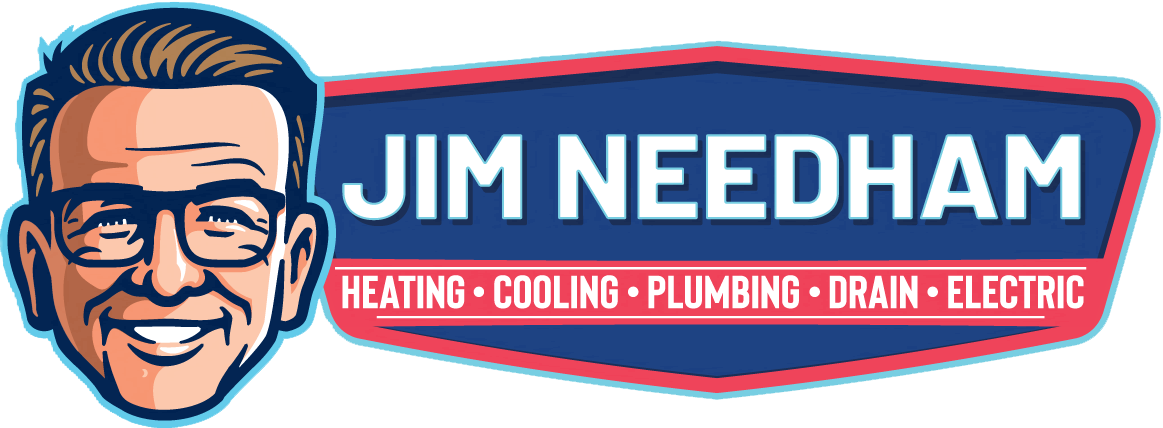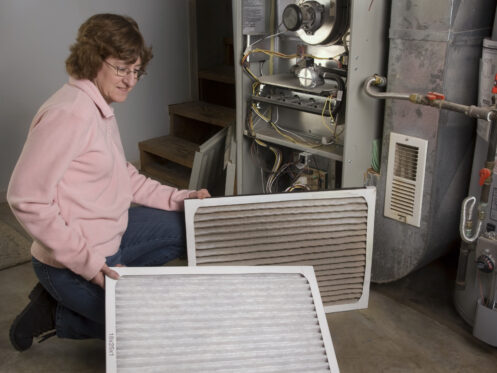A gas furnace is generally always the most effective option for heating a home during the cold Colorado winters. However, gas furnaces are fairly complicated and require quite a bit of maintenance to keep providing effective heating. Whether or not a furnace is properly maintained can make a major difference in how long its lifespan is and how much you pay to heat your house. Luckily, keeping your furnace properly maintained is easy as long as you follow these simple steps.
1. Check the Air Filter Monthly
Furnace manufacturers always recommend replacing the air filter in a heating system at least every 90 days. However, this is just a general guideline, and you may sometimes need to replace the filter every month or two.
Running a furnace with a dirty filter is definitely something you should always try to avoid. As an air filter gets dirty, it starts to clog up, so less and less air can be drawn through it. When the airflow coming into a furnace is reduced, it leads to the heating system producing less heat. The furnace itself will still produce the same amount of heat. However, there will be less hot air blowing out of the vents since there’s less cool air coming into the furnace.
If there isn’t a sufficient volume of cool air constantly coming into the furnace and flowing over its heat exchanger, the unit can also quickly start overheating. Your furnace has a safety mechanism known as the high-temperature limit switch that will automatically trigger the gas valve to close and the unit to shut off if its internal temperature gets too hot. However, there’s still a risk that the extreme heat could damage the furnace’s wiring and electrical components.
An even bigger issue is that overheating can lead to the heat exchanger cracking. Heat exchangers are made of metal, which means they expand and contract as they heat up and cool down. This normally isn’t an issue since heat exchangers are designed to handle this expansion and contraction. However, when a furnace overheats and the heat exchanger gets hotter than it normally should, the metal will expand more. This can lead to the weld joints where the heat exchanger connects to the combustion chamber cracking or breaking. If the heat exchanger cracks, carbon monoxide will escape the furnace and make it unsafe to use.
Running your heating system with a clogged filter also puts the blower motor at risk of overheating. This is simply because the blower has to work so much harder to pull in air through the filter. The increased workload can cause its motor to start heating up more than normal.
All of these issues are why you should always remember to check the air filter monthly to ensure it never gets too dirty for your furnace to work properly. As soon as the filter starts turning a darker color, it’s time to toss it out and put a new one in.
2. Make Sure You’re Using the Right Air Filter
It’s also important that you use the correct filter for your furnace. Most HVAC air filters are rated for efficiency using the Minimum Efficiency Reporting Value (MERV) scale. However, some manufacturers instead just label their residential air filters as Good, Better and Best. Filters labeled Good are usually around MERV 6 to 8. Filters labeled Better are typically around MERV 9 or 10, while filters labeled Best are usually MERV 11 or 12.
The issue is that not all residential HVAC systems are powerful enough to use a higher MERV filter. Larger homes have larger, more powerful systems that may be able to handle up to a MERV 12 filter. However, some systems can only handle up to MERV 8 or MERV 10 filter. If you use a higher MERV filter that’s more efficient than your HVAC system can handle, it will have almost the same effect as using an extremely dirty, clogged filter. The reason is that the more efficient a filter is, the harder it is to draw air through it.
At the same time, you don’t want to use a filter that has too low of a MERV rating since this can eventually make your furnace less effective and lead to air quality issues. As such, we’d definitely recommend asking a furnace technician which filter is best when you have your heater serviced.
3. Get Your Furnace Professionally Maintained Every Year
Replacing the air filter is really the only type of furnace maintenance you can do yourself, which is why you also need to have your furnace professionally serviced or maintained. The fact is that a furnace will almost never last as long as it potentially could if you don’t keep it properly maintained. A heater that’s neglected will eventually have various issues arise that make it less effective and lead to increased wear. This is because a furnace that isn’t functioning effectively will heat more slowly so that it has to run for more hours every day. A poorly functioning furnace will also work less energy efficiently than it should. Combine this with the unit running more than it should and you end up with greatly increased heating costs.
One of the most common reasons that a furnace will stop heating effectively is that the gas ports on the burners are dirty. When the burners are dirty, they can no longer fully combust the gas flowing out of them. When a furnace is working effectively, the flames should be steady, bright blue, and extremely hot. Incomplete combustion produces weak orange or yellow flames that don’t burn nearly as hot, which obviously means the furnace doesn’t put out nearly as much heat.
There’s also a high risk that your furnace will suddenly quit working if you don’t have it serviced every year. One common issue that results from a lack of maintenance is that the flame sensor will eventually get too dirty to function correctly. The purpose of the flame sensor is to ensure that gas doesn’t continue flowing to the burners if they don’t immediately light or suddenly go out for any reason. When the flame sensor gets too dirty, it loses its ability to detect the flames produced by the burners. The flame sensor needs to detect the flames within a few seconds of the furnace igniting. If it doesn’t, the gas valve will shut and the burners will immediately go out. This issue means that the furnace will be unusable until the flame sensor has been cleaned.
4. Watch for Signs That Your Furnace Needs Service/Repairs
Professional maintenance can help to prevent many common furnace issues. However, even a properly maintained furnace can still suddenly experience various problems, especially as it gets older. If an issue does arise, getting it fixed promptly can often be the difference between a fairly easy repair and a much more costly one. Ignoring the problem can also lead to increasing heating costs or cause the furnace to suddenly quit working. Unusual sounds, a lack of sufficient heat, or a heater that starts running more or longer than usual are all signs that you need to schedule an inspection and have the unit serviced or repaired.
Jim Needham Heating Cooling Plumbing and Drain has been helping Denver area residents with their home’s heating and air conditioning for more than three decades. Our certified technicians have years of experience in furnace and AC maintenance and repairs and can help keep your HVAC system running smoothly. We also offer expert HVAC installation as well as plumbing, drain, and water heater services. If you need to have your furnace inspected or maintained or help with your HVAC or plumbing system, give us a call today.


